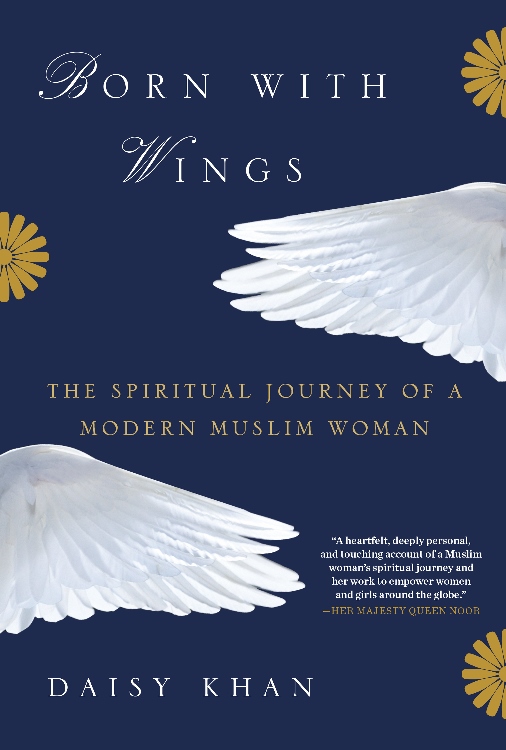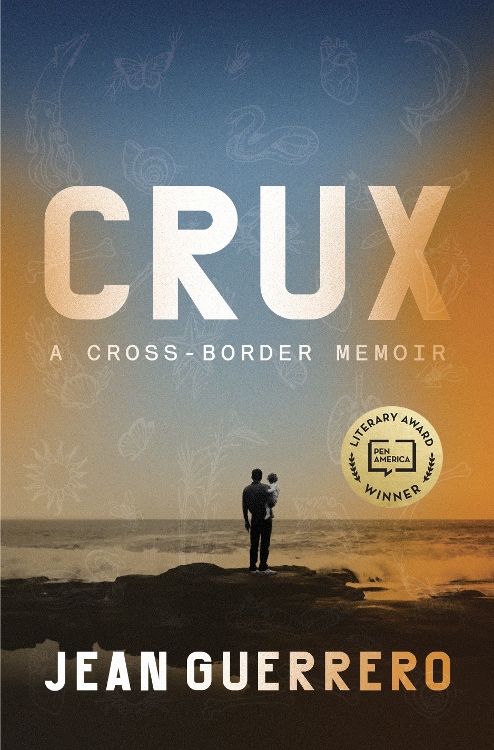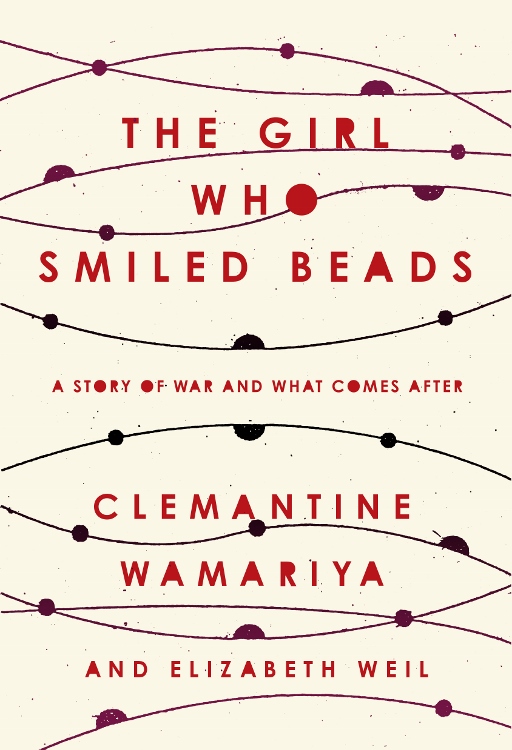
From left: Daisy Khan (Victoria Fleitz); Jean Guerrero (Stacy Keck); and Clemantine Wamariya (Julia Zave)

A world-renowned activist for the rights of Muslim women, Daisy Khan attended a Roman Catholic elementary school where she began her day saying the Lord's Prayer.
Born With Wings: The Spiritual Journey of a Modern Muslim Woman chronicles Khan's life from her early childhood growing up in India to her adolescence and adulthood in New York and New Jersey, where she resides with her husband. Her memoir's title alludes to a dream she had that her family said predicted she would do great things. And she has.
She initiated the first global Muslim women's advisory council, which advances women's rights through scriptural interpretation. She founded and directs the Women's Islamic Initiative in Spirituality and Equality. She also served as the executive director of the American Society for Muslim Advancement until she handed over the program to her husband, Imam Feisal Abdul Rauf.
Born in 1958 in Kashmir, Khan says she was encouraged by her parents to study and to think for herself. She was close to her grandmother who worked as a headmistress in a local school at a time when few women were educated or had high-ranking jobs. Khan's grandmother had a deeply spiritual side and nurtured in Khan a similar spirituality.
Khan's religious sensibilities were also nourished by Roman Catholicism as she (along with Christians, Hindus, Sikhs and other Muslims) attended Presentation Convent School, where she went to Mass and celebrated holy days. She acknowledges the Congregation of Presentation Sisters who taught her, saying their teaching lives on in her life and work.
At 16, she left home because of political tensions between India and Pakistan and came to the U.S., staying with relatives while she finished her education. After earning a degree from the New York School of Interior Design, she took a job in architectural design. She writes that she had a fulfilling career but felt that her "soul was starved" and therefore joined a Sufi mosque where she studied the religion of her childhood and learned to love it as an adult.
She also fell in love with Rauf, whom she later married despite her family's objections since he had been twice married and divorced. This would come back to haunt her when he was accused of stealing donations from what was called the "Ground Zero Mosque" and spending the money on a mistress. He would later be acquitted. Khan, however, glosses over this painful side of her life, only implying the emotional upheaval it caused.
Promoting Islam as a religion of peace, Khan contends that it is an Abrahamic religion that has many of the same tenets as Judaism and Christianity. She notes, for example, that she was taught one should love thy neighbor and that the precept comes from both the Bible and the Quran, which she quotes frequently.
She sees her message thwarted by the Islamic State group and the terrorist attacks that followed 9/11. Nevertheless, she works to promote goodwill. This thought-provoking debut memoir, dubbed her spiritual autobiography, is a fine example of her efforts.

Devout Roman Catholics whose faith is also rooted in indigenous beliefs, both sides of Jean Guerrero's family came to the United States in search of a better life.
But as she explains in Crux: A Cross-Border Memoir, they did not find it. As Guerrero, a journalist who covers U.S.-Mexico border stories, describes it, they generally found more opportunities and less happiness.
Her probing debut memoir contains seven sections and roughly follows the path to the underworld set out in the Mayan creation legend, "Popol Vuh." According to this story, the twins (moon and sun) venture into the underworld, Xibalba, to rescue their father who is trapped there — suggesting the somewhat convoluted trajectory of Guerrero's memoir as she also searches for her own father.
In addition, each chapter is named after a part of the legend and is composed of vignettes dealing not with actual jaguars or bats (as in the chapter titles) but with what the bats suggest — often hallucinations and nightmares. These also relate to Guerrero's story as her father suffers from drug addiction, schizophrenia and related mental disorders.
When the book begins, Guerrero is living with her parents in California and is an honor student with a gift for writing. Then she begins abusing drugs. Soon she cuts her wrists, hallucinates, attempts suicide, almost drowns, and thinks that she is a schizophrenic, then decides she isn't.
Guerrero tells us that her mother studied medicine in her Puerto Rican hometown and came to the U.S. where she worked as a resident in a New York hospital. Disliking New York's cold winters, she moved to San Diego to practice medicine.
Here she met Guerrero's father, who, according to Guerrero, may be a shaman, has manic episodes and hears voices. Once, in a moment of panic, he put a metal crucifix in the fire then placed it on his chest as if branding his body. Meanwhile, he wanders into and out of Guerrero's life like a lost soul. He lives in the U.S., where he seems unable to find and keep satisfying work. He takes trips around the world and makes frequent visits to family members in Mexico, where he takes up with unsavory friends and relatives.
As the memoir progresses, Guerrero becomes obsessed with three questions: "Why are we broken? How can I fix us? What is the secret?" She comes up with several possible answers, but nothing definitive. Ultimately, despite all of her efforts to find him, her father disappears from Guerrero's life. And although she at least seems to have found herself, this barely alleviates the sense of anti-climax with which the book ends.

During the Rwandan genocide and civil war, nearly 1 million people died. Another million lost everything — their livelihood, health, homes and families. Anywhere from 250,000 to 500,000 women were raped. About 400,000 children were orphaned. But two girls from Kigali, Rwanda's capital city, survived.
Six-year-old Clemantine Wamariya and her 15-year-old sister, Claire, journeyed for six years through seven African countries and then arrived in the United States.
The Girl Who Smiled Beads, Clemantine Wamariya's debut memoir, written with Elizabeth Weil (a contributing writer for The New York Times Magazine), shares their story.
Using both small details and broad strokes, Wamariya writes evocatively about events that affected her, such as when she was a small child and heard grenades exploding in her neighborhood: "My parents' faces turned into faces I had never seen," she writes. "I heard noises that I did not understand — not screaming, worse. My mother cried again."
With chapters alternating from the past in Rwanda to the present in the United States, the flow of the book is distracting at first. Yet the sheer drama of the circumstances keeps the narrative riveting.
Advertisement
Wamariya begins with a close-up of her life as a child in a middle-class Roman Catholic family in Kigali, with a nanny. She notes that her father was a successful businessman, and that her mother, a devout Catholic, faithfully attended Mass and offered what Wamariya calls "Catholic prayers" for her children and family.
Soon the two girls were sent to their grandmother's farm for safety. When soldiers banged on the front door, their grandmother told them to run, which, fortunately, they did, since everyone else in the house was killed.
They traveled south from the family farm in Butare near the Burundi border to a refugee camp in Durban, South Africa, a distance of about 2,630 miles, then journeyed back north to Lusaka, Zambia — another 1,320 miles.
As violence spread from Rwanda to other African countries, they were on the run from 1994 until 2000. The two joined other throngs of fleeing refugees and stayed in camps with deplorable conditions. They had barely enough food or water. They had no shoes and wore rags. They lived amid insects, garbage, raw sewage, filth, disease and violence. Every so often, a kindly person — usually a member of the clergy — helped them.
In Zambia, Claire, who now had a husband and two children of her own, learned of a U.N. program that could provide asylum to those who survived the effects of genocide and was able to arrange for the family's journey to the United States.
Claire earned money cleaning hotel rooms, raised her children, and tended to her extended family and her (by now) elderly parents. Clemantine, sponsored by a Christian family, grew up, graduated from Yale and appeared on "Oprah" with Elie Wiesel, although she felt less like a celebrity and more like a homeless child.
Years after the odyssey ended, Wamariya's mother ascribed her daughters' survival to the miraculous intercession of St. Brigid, patron saint of babies.
But as seen in this poetically written, searchingly honest memoir, Wamariya considered herself so broken that she wasn't even sure she had survived, let alone experienced anything smacking of divine intervention.
[Diane Scharper teaches "The Art of Memoir" for the Johns Hopkins University Osher Program. She is the author or editor of several books, including Reading Lips and Other Ways to Overcome a Disability.]
Editor's note: To keep up with NCR book reviews, click here to sign up for the NCR Book Club email.






